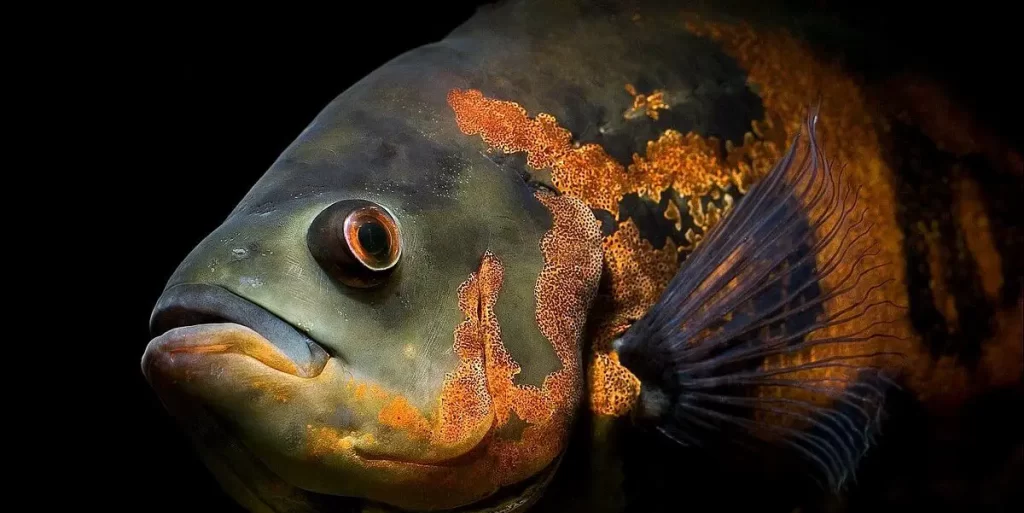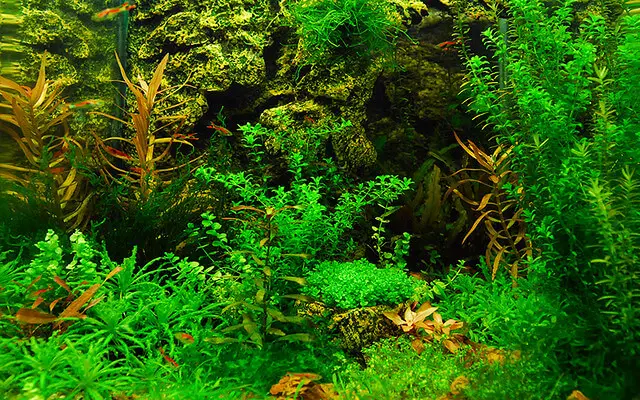The preference of every aquarist differs. Some like a planted tank with sand and gravel as the substrate, while some like a fish-only tank with just rocks. It all depends on how you want your tank to look. However, with different substrate ideas, the best fish for each type of substrate also changes. So, what are the best fish for different types of aquarium substrates, then?
The best fish for different substrates are:
- Sand substrates need smaller fish like neon tetras, dwarf gouramis, kuhli loaches, etc.
- Gravel substrates can have a mix of small and large fish like angelfish, barbs, corydoras, plecos, rainbows, etc.
- Soil substrates are best for fish that love to dig, like corydoras, loaches, and some plecos.
- Crushed coral or shells are best for fish that love to chew on things like some plecos, cichlids, and gobies.
Moreover, the most popular substrate that aquarists love to have in their tank is sand and gravel. But if you are not a big fan of both, you can even go for soil, crushed corals, or even set a tank without substrates. It’s all up to you.
I know substrates don’t seem like a big deal, but in reality, it is very important for a happy and healthy tank. So, I will be discussing with you the different types of aquarium substrate and the best fish in them in detail. Stay tuned to know more!
What Are The Different Substrates For Your Fish?
If you are a novice, you might have a concept that substrate is something that you put in the bottom of your fish tank and that is all there is to it. However, the substrate can actually have a big impact on the health and well-being of your fish.
You will be surprised to know that as there are different types of fish, there are also different substrates that can be used for your fish. So, what are they then?
Some of the most popular substrates that you can keep in a freshwater tank are:
Gravel And Stone Substrate
Gravel and stone are the most common and widely used substrate and there are lots of reasons why. These substrates are very affordable, easily available, and offer a very natural look to your aquarium. They are also perfect for live plants as the roots can easily grip them.
In addition to this, you can get different sizes and colors of gravel and stone to create a unique look for your fish tank. Some of the types of gravel famous in fish keeping are:
Regular Pebbles
As the name suggests, regular pebbles are the usual type of aquarium substrate. They come in different colors, but the most common ones are brown and black. They’re also quite cheap, so if you’re on a budget, the regular pebble is a good option.
However, one of the key benefits of using regular pebbles is that they help to keep the aquarium clean. They don’t absorb toxins and ammonia-like other substrates, so you won’t have to worry about your fish getting sick.
Coral Sea Pebbles
Coral sea pebbles are a type of aquarium substrate made from coral. They’re a bit more expensive than regular pebbles, but they offer a few benefits.
For one, coral sea pebbles are more aesthetically pleasing. They come in a variety of colors and can really make your aquarium stand out. Another benefit of coral sea pebbles is that they’re slightly more porous than regular pebbles. This means that they can help to aerate the water and keep it clean.
Natural Rainbow
Generally, the natural rainbow aquarium substrate is made from a variety of different stones. This gives it a unique and colorful appearance that can really make your aquarium stand out.
A natural rainbow substrate is also quite porous, so it can help to aerate the water and keep it clean. However, one of the downsides of using a natural rainbow substrate is that it’s quite expensive.
White Coral
White coral is another type of aquarium substrate made from coral. It has a similar appearance to coral sea pebbles, but it’s slightly more opaque. One of the benefits of white coral is that it can help to reflect light and make your aquarium brighter.
However, one of the downsides of white coral is that it’s quite fragile. You’ll need to be careful not to break it when you’re cleaning the aquarium or moving rocks around.
Similarly, you will also find quite a variety of sand substrates too.
Sand Substrate
Sand substrates are also a very popular choice for many fish keepers. There are many different types of sand substrate that you can choose from.
- Carib Sea ACS05820 Super Natural Moonlight Sand for Aquarium, 5-Pound
- Carib Sea ACS05840 Super Naturals Crystal River Sand for Aquarium, 5-Pound
Such as:
Live Sand
Live sand is a type of substrate that is made from live bacteria and other microorganisms. This type of substrate is great for fish that like to dig and sift through the sand. It is also good for growing live plants in your aquarium.
Plant Sand
Plant sand is a type of substrate that is made from fine-grained sand. This substrate is usually preferred for growing live plants in your aquarium. It can also be used for fish that like to dig and sift through the sand. For example, gobies, eels, and loaches are known to enjoy this type of substrate.
Pool Sand
Pool sand is another popular choice for many aquariums. It is very fine-grained sand that is often used in swimming pools. This substrate is good for fish that like to dig and sift through the sand. It can also be used for growing live plants in your aquarium.
Artificial Play Sand
Artificial play sand is a type of substrate that is made from recycled materials. It is often used in playgrounds and sandboxes. This substrate is good for fish that like to dig and sift through the sand. Mostly the bottom dweller fish like to stay in this type of substrate.
Soil Substrates
Soil substrate is not something that you might see in a regular fish tank. This is because soil can be tricky to maintain and keep clean. If you have your heart set on a soil substrate, then there are different types of soil that you can go for. It may be:
Regular Soil Substrate
This type of soil is what you would find in your garden. It can be mixed with other substrates or used on its own. The downside to using regular soil is that it can contain harmful toxins and chemicals. Therefore, you would need to wash it thoroughly before using it in your aquarium.
Baked Clay-Based Products Substrate
A baked clay-based product substrate is made by baking clay at high temperatures. This process makes the clay more durable and helps to prevent it from breaking down in the water. Baked clay-based products are a good option if you want a soil substrate that is easy to maintain. Fish such as corydoras and plecos will also enjoy rooting around in the substrate.
Aquarium Soil Substrate
Aquarium Soil is a type of substrate that is specifically designed for use in aquariums. It is made from a variety of materials, such as clay, sand, and gravel. Aquarium soil is safe for use in aquariums and will not contain any harmful toxins or chemicals. This substrate is a good option if you want a natural-looking aquarium.
Peat Moss Substrate
Peat moss is a type of Sphagnum moss that is commonly used as a soil additive. This type of substrate has a high absorbency rate, which makes it ideal for use in aquariums. Peat moss will help to keep the water in your aquarium clean and clear. It is also a good option for planted aquariums.
Coconut Fiber Substrate
Coconut fiber is a type of substrate that is made from the husks of coconuts. Usually, coconut fiber is an excellent substrate for both fresh and saltwater aquariums. It is also a good substrate for planted aquariums. Coconut fiber is a natural product and is safe for use in aquariums.
Marble Chippings As Substrates
Marble chippings are a great way to add both decoration and function to your aquarium. These chippings can be used as a substrate for live plants or as an accent in the aquarium. They are also pH neutral and will not alter the water chemistry in your aquarium.
One of the great things about marble chippings is that they are available in a variety of colors. You can find them in white, black, and even shades of green and blue. This means that you can find a color that will match or complement the fish you have in your aquarium.
Crushed Corals Substrate
If you are looking for a substrate that will help maintain water quality and stability, crushed coral is a great option. Crushed coral has a large surface area which helps to promote beneficial bacteria growth. This bacteria is important for breaking down waste products in the aquarium.
Crushed coral also contains calcium which is necessary for healthy plant growth. The only downside to using crushed coral is that it can be sharp and may damage delicate fish.
Plant Substrates
Plant substrates are ideal for aquariums that contain live plants. The substrate provides nutrients and anchoring for the roots of the plants. There are many different types of plant substrates available, so be sure to choose one that is suitable for the plants in your aquarium. They are:
Inert Substrates
Inert substrates are made of materials that do not change the water chemistry in your aquarium. This makes them ideal for use with sensitive fish or plants. The most common type of inert substrate is gravel.
Depleting Substrates
Depleting substrates are made of materials that slowly release nutrients into the water over time. This can be beneficial for aquariums that do not have live plants, as it provides a source of nutrients for the fish. However, it is important to monitor the water chemistry carefully when using a depleting substrate, as too much nutrient release can cause problems. The most common type of depleting substrate is sand.
No Substrates
Some aquariums do not have any substrate at all. This can be beneficial for fish that like to dig, as they will not damage their fins or barbs on the gravel. Usually, such tanks are called bare bottom tanks.
A bare bottom tank can be beneficial for the fish keeper as well since it is much easier to clean. There are no nooks and crannies for dirt and debris to collect, and algae growth is also minimized without the presence of substrate.
Bare bottom tanks are not ideal for all fish, however. The best fish for this type of substrate is typically a fast swimmer that does not spend much time on the bottom of the tank. Examples include danios, barbs, and certain types of tetras.
Since I have given you a range of options for choosing your substrate, you might be confused. Don’t you worry, I do have some tricks on how should you choose the substrate for your fish below.
How To Choose Substrates For Your Fish?
Choosing the substrate for your fish is as important as deciding the diet for your fish. The substrate has a crucial role to play in the life of your fish as it can affect their health, behavior, and even their appearance. So, what should you look for when choosing a substrate for your fish?
Particle Size
The particle size of the substrate is one of the most important factors to consider. If the particles are too large, your fish may have trouble swimming and could end up swallowing them. On the other hand, if the particles are too small, they can be easily ingested by your fish and could cause blockages in their digestive system.
Color
The color of the substrate can also be important, especially for fish that are sensitive to light. If you have a brightly-colored fish, you might want to choose a dark substrate so that they can feel more comfortable. Similarly, if you have a dark-colored fish, you might want to choose a light-colored substrate.
Reactivity with Water
Another important factor to consider is the reactivity of the substrate with water. Some substrates can change the pH of the water, which can be harmful to your fish. For example, if you have a freshwater aquarium, you might want to avoid substrates that are high in calcium carbonate, as this can raise the pH of the water.
Impact on Fish
Finally, you should also consider the impact of the substrate on your fish. Some substrates can be sharp and abrasive, which can damage your fish’s fins or scales. Others can release toxins into the water, which can be harmful to your fish.
Now, don’t you want to know how to pick the fish for your substrate after deciding what substrate to choose?
What Are The Best Fish For Different Substrates?
When it comes to aquariums, the options for substrates are nearly endless. You can choose from gravel, sand, or even live plants. Each substrate has its own benefits and drawbacks, so it’s important to choose one that will best suit your needs.
One of the most important factors to consider when choosing a substrate is the type of fish you’ll be keeping. Some fish are more suited to certain substrates than others. However, here are some of the options that you have for each substrate. Hopefully, it will help you in happy fish keeping.
The Best Fish For Gravel And Stone Substrates
If you have a gravel substrate in your aquarium, there are a few things to keep in mind when choosing fish. First, gravel can be abrasive and damage the delicate fins of some fish. Second, gravel can harbor bacteria and other organisms that can make some fish sick.
With that said, there are still plenty of great options for fish that do well in gravel substrates. Here are some of the best fish for gravel substrate:
Bettas
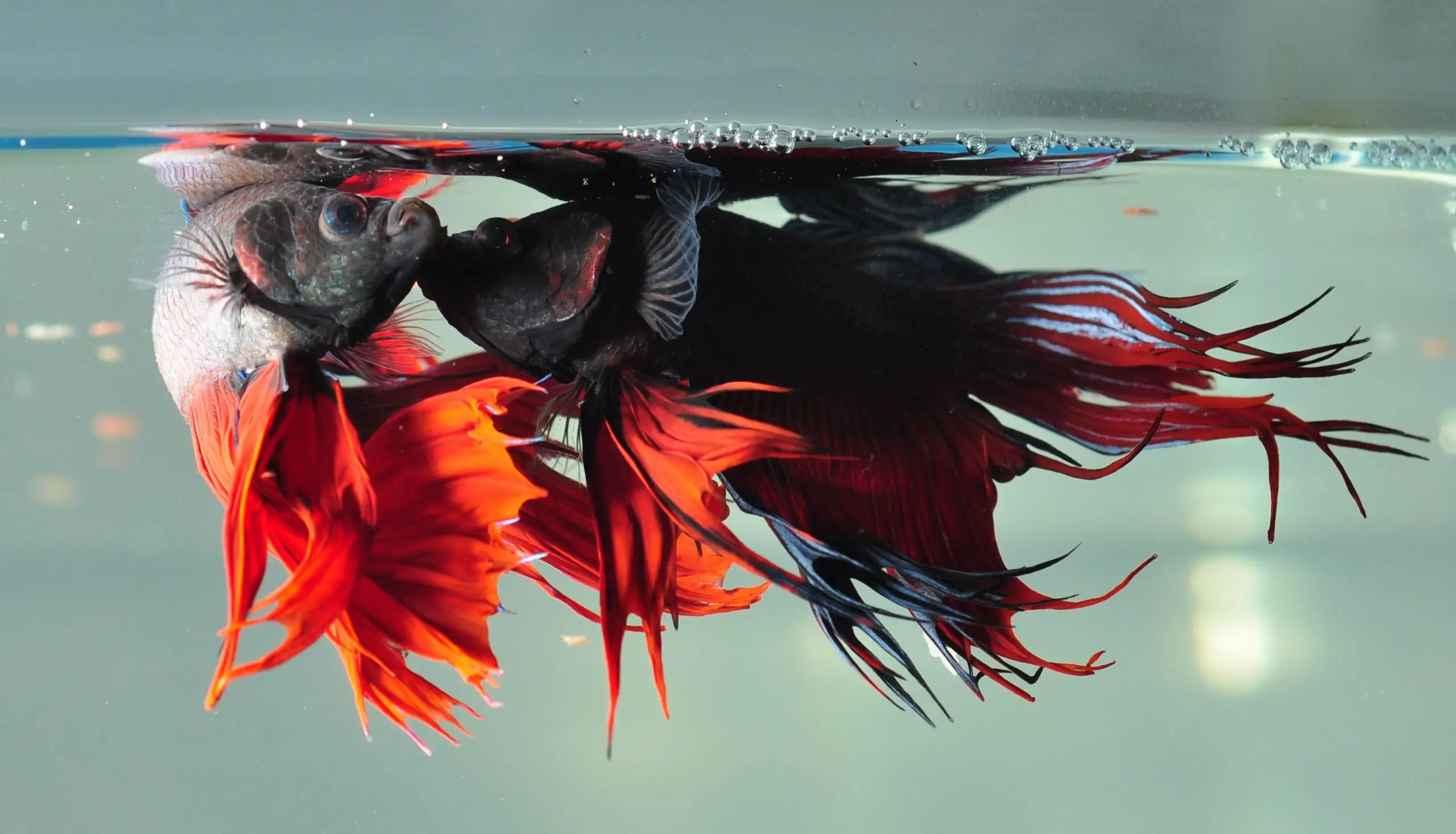
Betta fish, also known as Siamese Fighting Fish, is native to southeastern Asia. They are small fish, typically only growing to be two to three inches long. In their natural habitat, they live in stagnant waters with very little water movement. The water parameters in their natural habitat are usually pretty constant, with a neutral pH and low hardness.
Bettas are known for being quite aggressive, and as such, they should not be kept with other fish that are similar in size or appearance. They are best kept alone or with very small fish that they cannot easily fit into their mouths.
Gravel is the best substrate for Betta fish because it replicates their natural habitat the most closely. The gravel provides them with a stable place to perch and also doesn’t allow for much movement, which replicates the stagnant conditions of their natural habitat.
Bristlenose Pleco

The Bristlenose Pleco originates from the rivers of South America and can be found in a variety of habitats, including slow-moving streams, ponds, and lakes. They are small fish, typically reaching a maximum length of six inches.
Bristlenose Plecos are peaceful fish that do well with a variety of tankmates. They are also a good choice for beginner aquarists because they are relatively easy to care for.
When it comes to gravel substrate, Bristlenose Plecos are one of the best choices. They originate from rivers with gravel substrate, so they are accustomed to it. They also help to keep the substrate clean by sifting through it for food.
In terms of tank size, a 20-gallon tank is appropriate for a single Bristlenose Pleco. When choosing tankmates, be sure to select fish that are similar in size and temperament. Good choices include Tetras, Guppies, and Danios.
Platy Fish
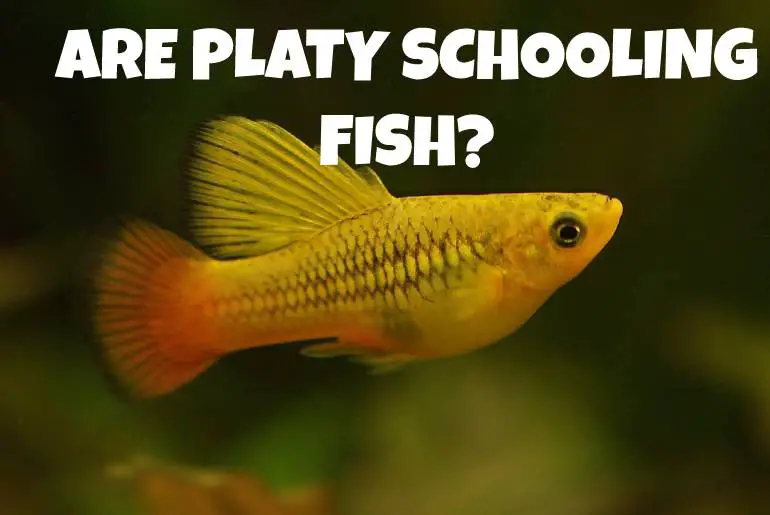
The Platy fish is a freshwater fish that originates from Central America. It’s a brightly colored fish that’s known for being peaceful and easy to care for, making it a popular choice for beginner aquarium owners.
Platies are also one of the best fish for gravel substrate tanks. This is because they originate from rivers and streams with a gravel bottom, so they’re used to swimming in this type of environment.
Gravel provides a natural rooting area for aquatic plants, which platies love to eat. In addition, the rough texture of the gravel helps to keep the Platy’s scales healthy and free of parasites. Furthermore, gravel is also more aesthetically pleasing than other types of substrates, such as sand or clay. As a result, it is easy to see why the Platy is the best fish for gravel substrate tanks.
Spiny Eels
Spiny eels are a popular choice for aquariums because they are relatively easy to care for and make an interesting addition to the tank. Some people choose them as their primary fish, while others use them as part of a more diverse community.
Either way, spiny eels are a good choice for most gravel substrates. The reason why they are the best fish for gravel substrates is that are their natural habitat. They are very comfortable in this type of environment and do not need anything too fancy or artificial to thrive.
Spiny eels are also a good choice because they stay relatively small, only growing to about a foot in length. This makes them a good option for smaller tanks. Finally, spiny eels are generally peaceful and can be kept with a variety of tankmates. They may occasionally eat very small fish, but they are not aggressive and will not harm larger fish.
Overall, spiny eels make a great addition to most gravel substrates and can provide hours of enjoyment for their owners.
Crayfish
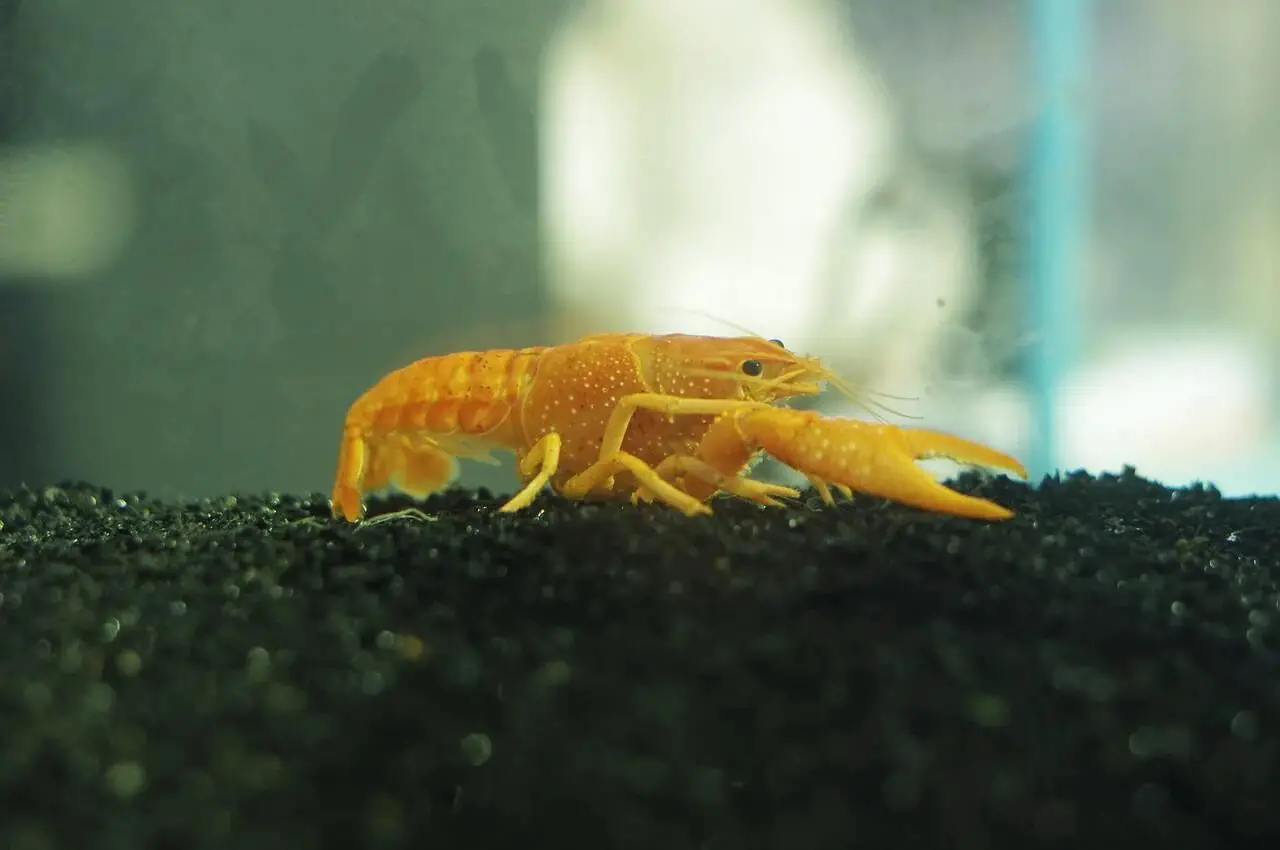
Crayfish are often thought of as freshwater lobsters, and they do share some similarities with their saltwater cousins. They have a hard exoskeleton, long claws and are scavengers by nature.
However, crayfish are much smaller than lobsters, averaging only four to six inches in length. They are also relatively easy to care for, making them a popular choice for beginner aquarium hobbyists. But why are crayfish the best fish for gravel substrate?
Crayfish are found in a variety of habitats, but they tend to prefer areas with plenty of hiding places and a soft bottom. This makes gravel substrate the perfect environment for them. In addition, crayfish are relatively small, so they don’t need a lot of space to roam. And because they are scavengers, they will help to keep the tank clean by eating any leftover food or debris.
Finally, crayfish are typically peaceful creatures that get along well with other tank mates. So if you’re looking for a low-maintenance pet that can help keep your tank clean, then a crayfish is a perfect choice!
Kuhli Loach
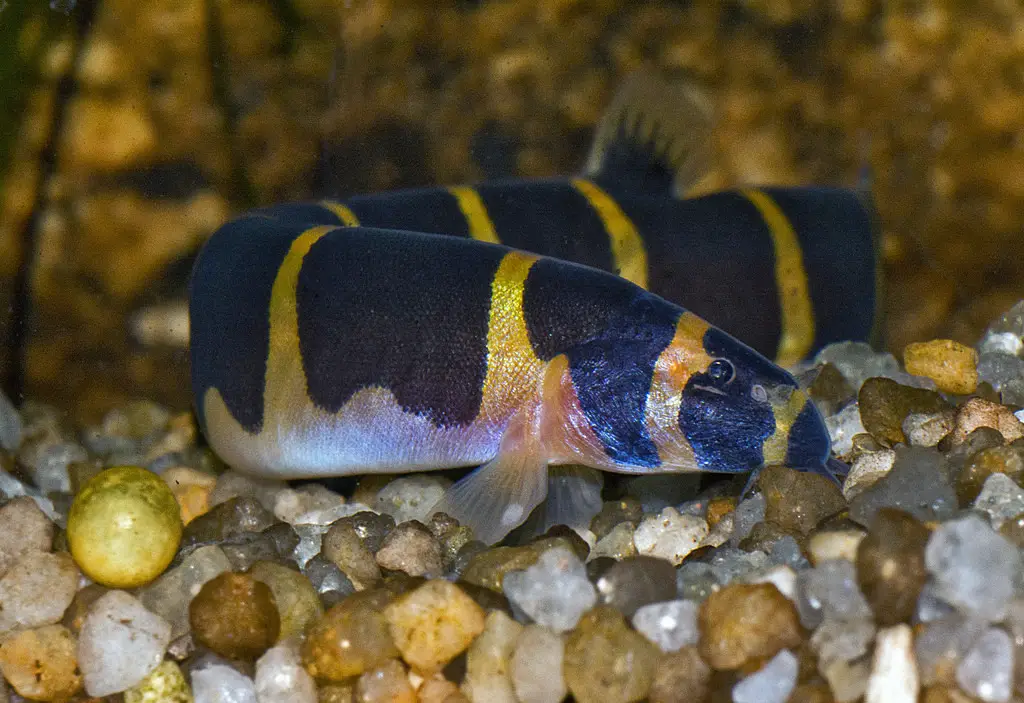
The Kuhli Loach originates from the slow-moving freshwater rivers and streams of Southeast Asia. They are small fish, typically only growing to be about 2-4 inches in length.
Kuhli Loaches are very peaceful fish and do well when kept in groups. They are also relatively easy to care for, as they are tolerant of a wide range of water parameters. However, they do require a gravel substrate in order to thrive. This is because Kuhli Loaches like to burrow and will often uproot live plants in the search for food.
For this reason, it is best to keep them in an aquarium with a gravel substrate and plenty of hiding places. The ideal tank size for Kuhli Loaches is 10 gallons or larger. While they are relatively hardy fish, they are sensitive to changes in water quality and parameters.
As a result, it is important to maintain a regular cleaning schedule and perform regular water changes. Overall, the Kuhli Loach makes an ideal addition to any freshwater aquarium. They are peaceful, easy to care for, and add a touch of playfulness and personality to their tanks.
These are the few fish that are best for a gravel substrate. However, when choosing the gravel, I would suggest you keep fine ones. Another important thing to consider when you have a gravel substrate is that this substrate is not ideal for delicate fish.
So, what will be best for such fish then?
Well, you have many other substrate options that will go well for little delicate fish. We will be exploring them further, so, stay tuned.
The Best Fish For Sand Substrates
Sand is a popular choice for many aquariums because it is relatively inexpensive and easy to find. Plus, sand can help create a natural-looking environment for your fish. Especially, sand can be a great substrate for bottom dwellers, like corydoras and loaches, who enjoy sifting through the sand to find food.
Furthermore, if you have fish that like to dig, then sand may be the substrate for you. Sand can also be a good choice if you have plants that need a little help getting started because sand can hold onto nutrients and help roots get established.
Some of the best fish for the sand substrate are:
Cardinal Tetra
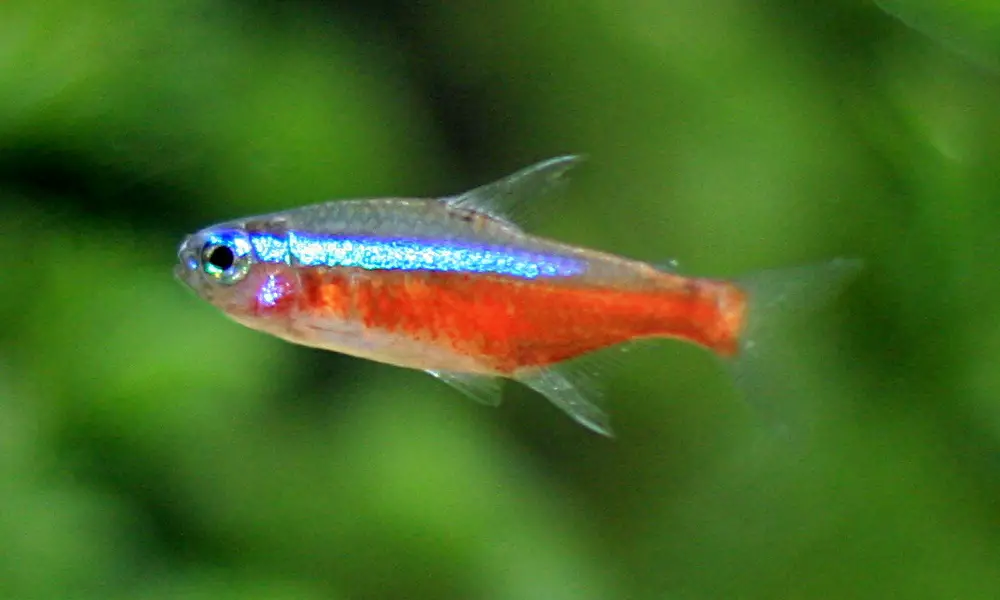
The Cardinal Tetra (Paracheirodon axelrodi) is a small freshwater fish that originates from the rivers and streams of South America. It is a popular choice for aquariums due to its vibrant red and blue coloration. The natural habitat of the Cardinal Tetra is murky, slow-moving water with a sandy substrate.
This aquarium fish typically reaches a size of 2.5 inches (6.4 cm), although some individuals may grow up to 3 inches (7.6 cm). One of the reasons why sand is the best substrate for Cardinal Tetras is because it closely resembles their natural habitat. A sandy bottom also provides these fish with plenty of places to hide and feel secure.
In addition, sand helps to keep the water clean and free of debris. For these reasons, and is often considered the best substrate for Cardinal Tetras.
Swordtails
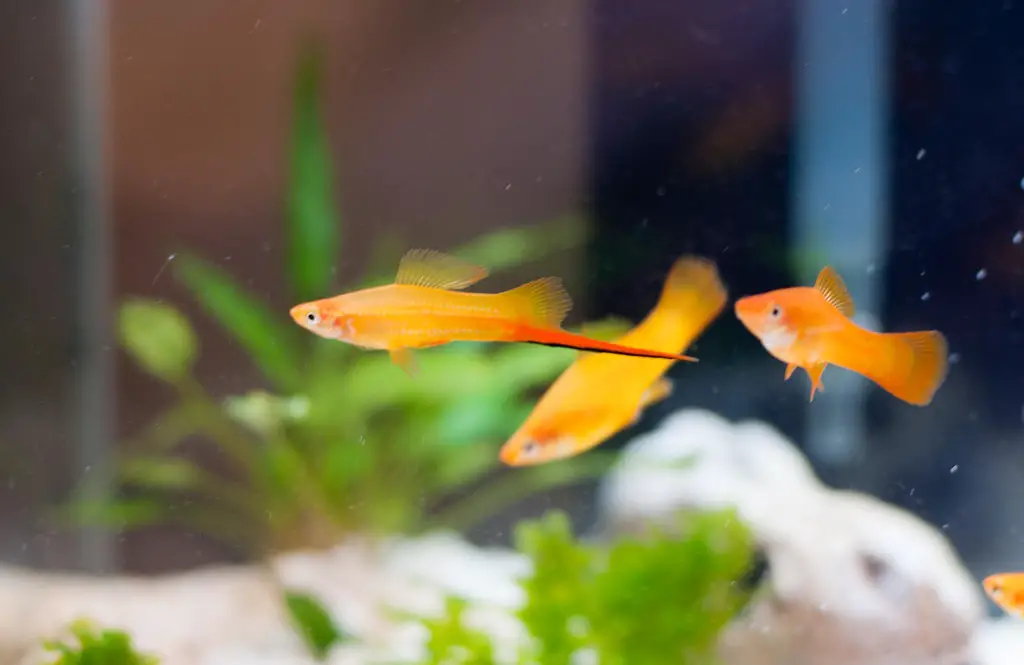
Swordtails are a group of freshwater fish that are native to North and Central America. They get their name from the long, sword-like tailfin of the males, which can be up to twice the length of their body. Swordtails are a popular choice for aquariums because they are relatively easy to care for and make a beautiful addition to any tank.
One of the best things about swordtails is that they do well in a wide range of environments. They can tolerate a wide range of temperatures and do not require a lot of space. Swordtails are also one of the few fish that actually prefer sand as their substrate. Most other fish would much rather have plant material or gravel to hide in, but swordtails actually prefer the open expanse of sand. This makes them an ideal choice for those who want to create a natural-looking tank.
However, there are a few things to keep in mind before choosing swordtails as your next fish. One is that they are known to jump out of tanks, so it is important to have a lid that fits snugly on your tank. Another is that swordtails are social creatures and do best when kept in groups. If you decide to keep swordtails, be sure to purchase at least six of them.
Cichlids
Cichlids are freshwater fish that originates from Africa. They are known for their bright colors and their wide variety of personality types. They range in size from 2.5 inches to over a foot long. One of the reasons why many aquarists choose cichlids is because they are one of the few fish that can thrive in a sand substrate.
Sand is a natural habitat for them, and it provides them with the perfect place to dig and sift through looking for food. It also offers them ample places to hide when they feel threatened. Another reason why sand is the best substrate for cichlids is that it helps to keep the water well aerated, which is important for their health.
The cons of keeping cichlids include their aggressive behavior towards other tank mates and their high level of activity which can make it difficult to maintain a peaceful tank environment. However, many aquarists find that the pros of keeping cichlids far outweigh the cons.
Goldfish
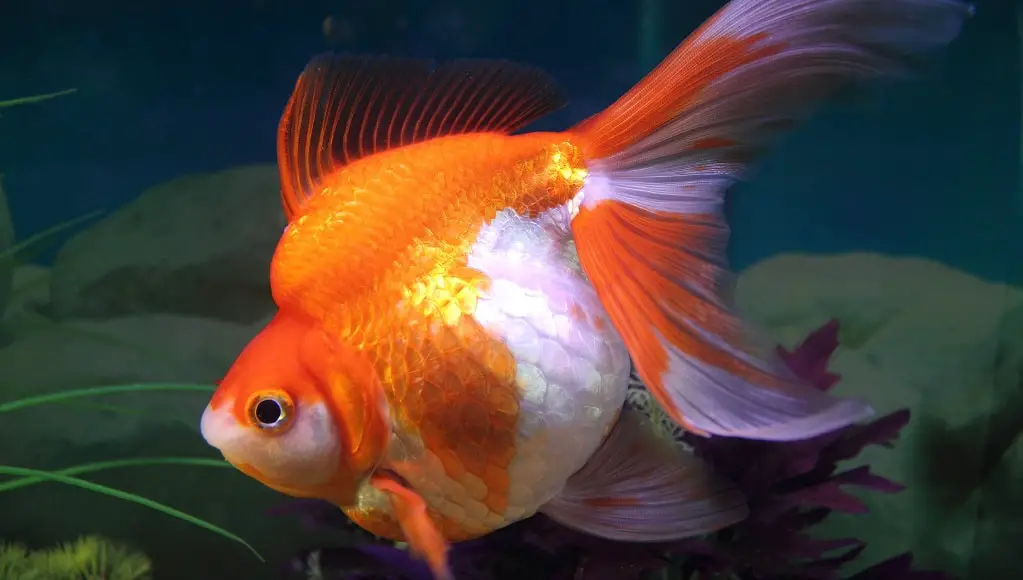
Goldfish are a widely popular type of fish that come in a variety of colors, shapes, and sizes. They are also relatively easy to care for, making them a good choice for first-time fish owners.
One of the reasons why goldfish are so popular is that they can be kept in a variety of different types of tanks, including those with sand substrates. Sand is a good choice for goldfish tanks because it is softer than gravel and won’t damage the fish’s delicate fins. In addition, sand helps to keep the water clean by trapping debris and preventing it from sinking to the bottom of the tank.
Goldfish originate from Asia and have been kept as pets for centuries. Today, they are one of the most popular types of aquarium fish in the world. Goldfish typically grow to be about 12 inches long, although some larger varieties can reach up to 18 inches.
When choosing a goldfish tank, it’s important to pick a size that will accommodate your fish as they grow. Goldfish are generally hardy creatures, but they can be susceptible to illness if their tank is not properly maintained. Therefore, it’s important to perform regular water changes and keep an eye on their water parameters.
Shrimp
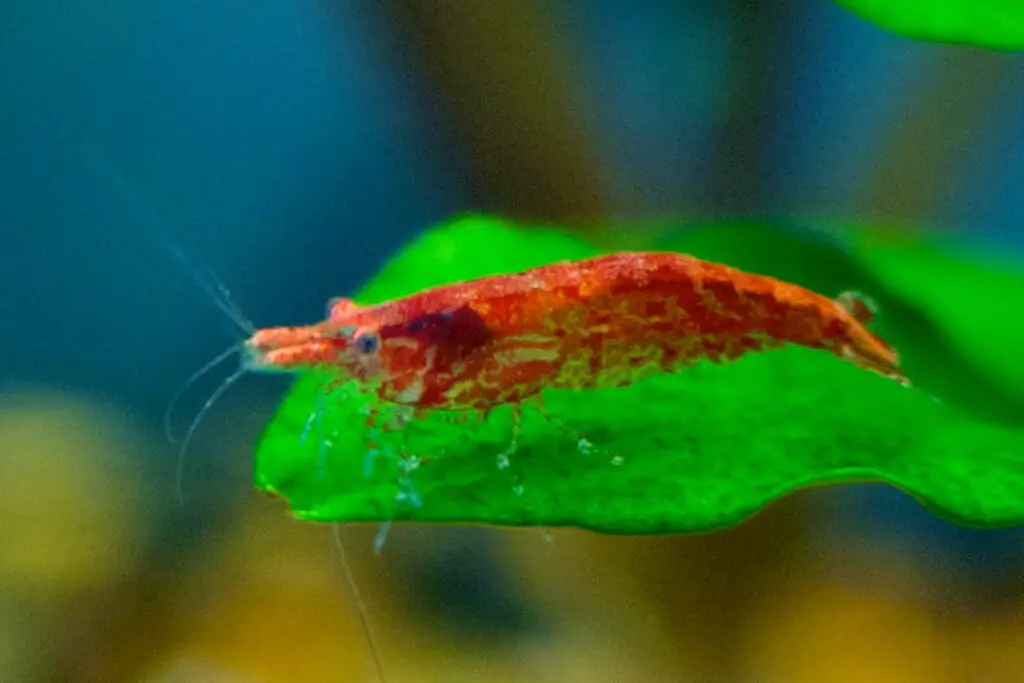
There are many reasons why sand is the best substrate for shrimp. First, sand helps to keep the water well-oxygenated, which is essential for shrimp that require high levels of dissolved oxygen. Second, sand is soft. So it’s easy for shrimp to burrow and build their homes. Third, sand provides essential nutrients that shrimp need for good health. Finally, sand helps to keep the pH of the water stable, which is important for preventing disease.
The only downside to sand is that it can be difficult to clean if it becomes too dirty. Shrimp are small, delicate creatures that originate from freshwater streams and rivers in Asia. They are typically pink or red in color, and they range in size from two to three inches. Shrimp are omnivores, and they will eat just about anything, but they especially enjoy eating algae and other plant life.
Shrimp are relatively easy to care for, but they do require some special considerations. For example, they should only be kept with other peaceful fish that are small enough not to eat them. Additionally, shrimp require a very clean environment and good water quality, so regular water changes are essential.
Otocinclus Catfish
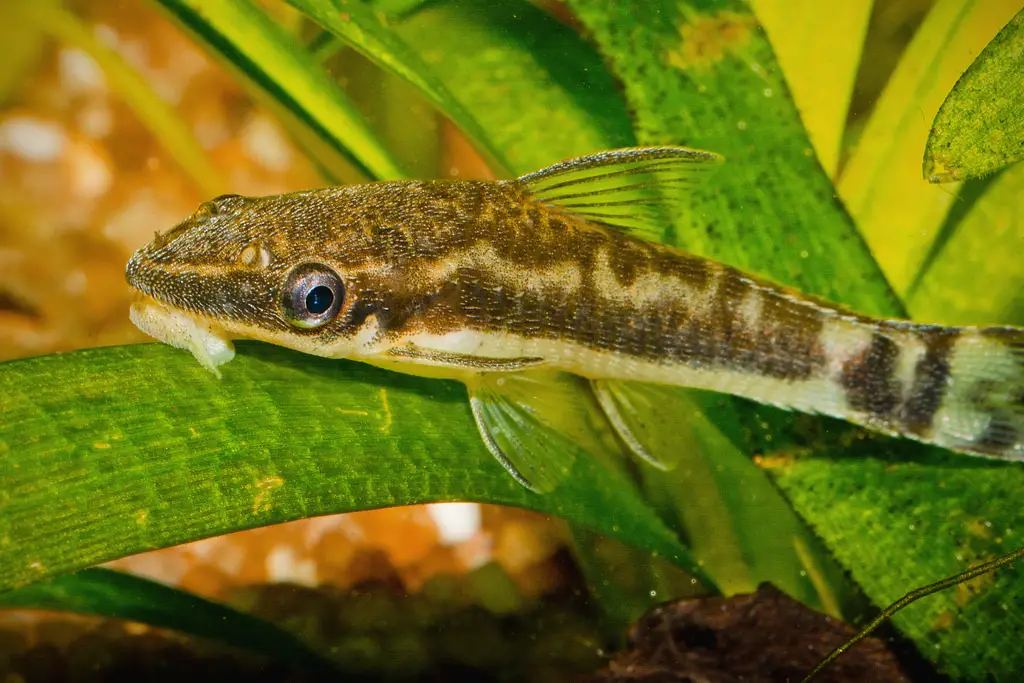
Otocinclus Catfish are small, bottom-dwelling freshwater fish that originate from South America. They typically only grow to be about 2 inches long, and they have a dark brown or black coloring. Otocinclus Catfish are peaceful fish that do well in community tanks. They prefer to live in groups of 4 or 5 fish, but they can also do well on their own.
Basically, there is no doubt that Octocinclus catfish are one of the most popular freshwater aquarium fish. They are peaceful, hardy, and easy to care for. They are also very active and love to play in the sand.
However, you may not know that Sand substrate is best for Octocinclus catfish. And it is soft and gentle on its delicate barbels. Furthermore, It is also easier for these fish to bury themselves in the sand to rest and feel safe.
So. if you have Octocinclus catfish, be sure to use a sand substrate in your aquarium.
Loaches
Loaches are a type of fish that originates from Southeast Asia. They are best known for their long, eel-like bodies and their playful personalities. Loaches are a popular choice for aquariums because they are relatively low-maintenance and can coexist peacefully with other fish. One of the main reasons why loaches are such a popular choice is because they do well in sand substrate.
Sand is generally considered to be the best type of substrate for Loaches because it allows them to burrow and creates a more natural environment. Additionally, sand is easier on their delicate skin and helps to keep their fins healthy. Although sand is the ideal substrate for Loaches, there are some potential drawbacks to keep in mind. Sand can be more difficult to clean than other substrates like gravel, and it can also be harmful if inhaled. For this reason, it’s important to choose a high-quality sand that is specifically designed for aquarium use.
Generally, loaches are a great choice for anyone looking for a low-maintenance fish that will add some personality to their tank. Just be sure to do your research and choose the right type of sand before you get started.
Oscar
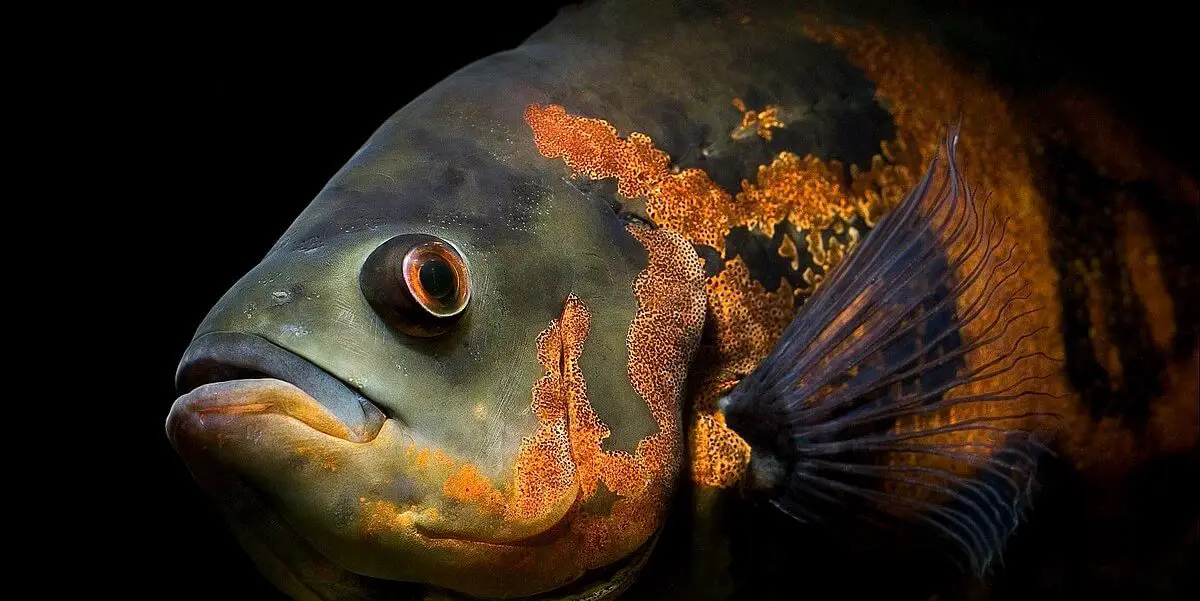 Sand is the best substrate for Oscar fish because it is similar to the natural habitat of these fish. Sand provides a soft, natural surface for the fish to rest on and also allows them to bury themselves if they choose. Oscars are known to enjoy digging in their tanks, so sand is the perfect substrate for them.
Sand is the best substrate for Oscar fish because it is similar to the natural habitat of these fish. Sand provides a soft, natural surface for the fish to rest on and also allows them to bury themselves if they choose. Oscars are known to enjoy digging in their tanks, so sand is the perfect substrate for them.
Another benefit of the sand substrate is that it is very easy to keep clean. Oscar fish are messy eaters and can quickly make a mess of a gravel substrate. Sand can be easily siphoned out of the tank when it needs to be cleaned.
If you are thinking about setting up an aquarium for your oscar fish, be sure to use sand as the substrate. It will provide the best environment for your fish and keep your tank looking clean and tidy.
Rainbow Fish
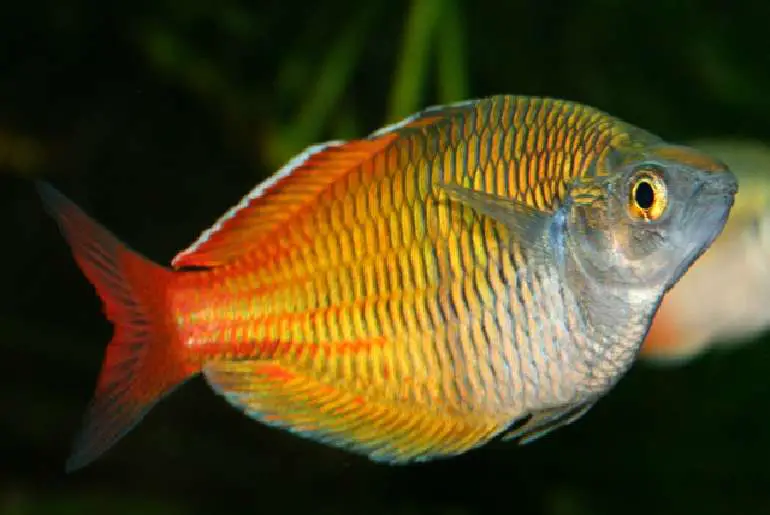
Rainbowfish are a type of freshwater fish that come from Australia and New Guinea. They are brightly colored and very popular among aquarium enthusiasts. Rainbowfish do best in an aquarium with a sand substrate.
There are several reasons why sand is the best substrate for rainbowfish. First, rainbowfish come from habitats with sandy bottoms. This means that they are used to swimming in water with a sandy substrate. A sandy substrate will also provide them with the necessary nutrients that they need.
The sand acts as a natural filter and will help to remove any impurities from the water. This will help to keep your fish healthy and happy. Finally, sand is a very aesthetically pleasing substrate. It can help to create a natural and relaxing environment for your fish.
Gobies
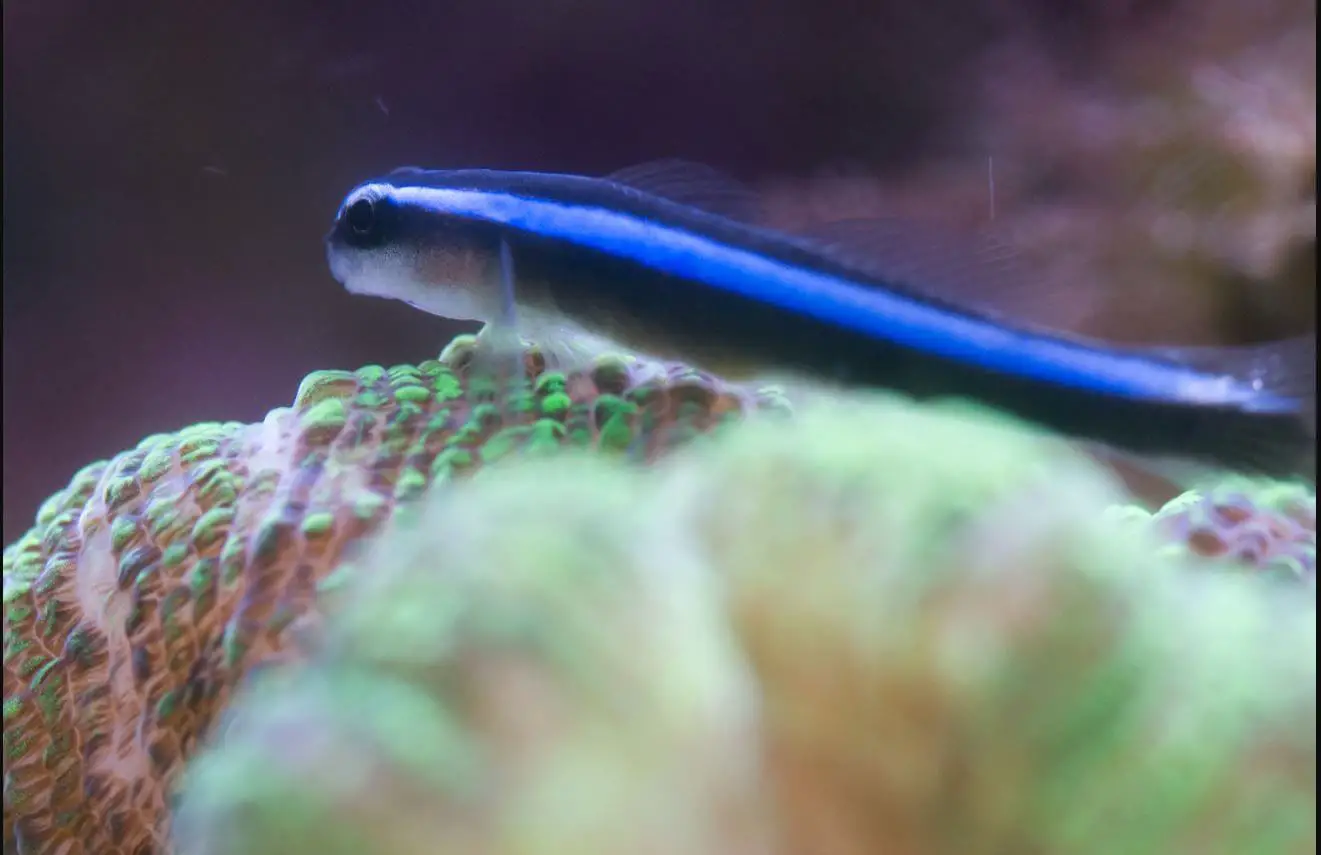
Gobies are a type of small, carnivorous fish that are native to marine and brackish habitats all over the world. They are well known for their ability to live and thrive in a wide range of different environments, and they are a popular choice among aquarium hobbyists.
One of the reasons why gobies are such a popular choice is because they do well in tanks with the crushed coral substrate. Crushed coral is a type of substrate that is made up of small pieces of coral that have been broken down. It is a popular choice among aquarium hobbyists because it helps to create a naturalistic look in the aquarium.
In addition, crushed coral provides gobies with a place to hide and feel secure. The only downside to keeping gobies in an aquarium with crushed coral is that they may occasionally stir up the substrate when they are hunting for food.
However, this can easily be remedied by using a net to catch the gobies when they are hunting. All in all, gobies are an excellent choice for freshwater and saltwater aquariums alike.
The Best Fish For Crushed Corals Substrates
Some of you might not believe me, but crushed corals can be a great substrate for your aquarium. There are many reasons why crushed corals are used as a substrate.
First, it is a very good buffer for pH fluctuations. This means that your water will be less likely to experience sudden changes in pH, which can be stressful for fish (and other aquarium inhabitants).
Crushed coral also provides a place for beneficial bacteria to live and grow. These bacteria help to break down waste products in the aquarium, which helps to keep the water quality high.
Crushed coral is also a very good source of calcium for fish and other aquarium inhabitants. Calcium is necessary for proper bone and shell development.
Don’t you think crushed corals are simply the best? So, what will be the best fish for such a best substrate then?
If you don’t know the answer to this, don’t worry! Here I have a few options for you, such as:
African Cichlids
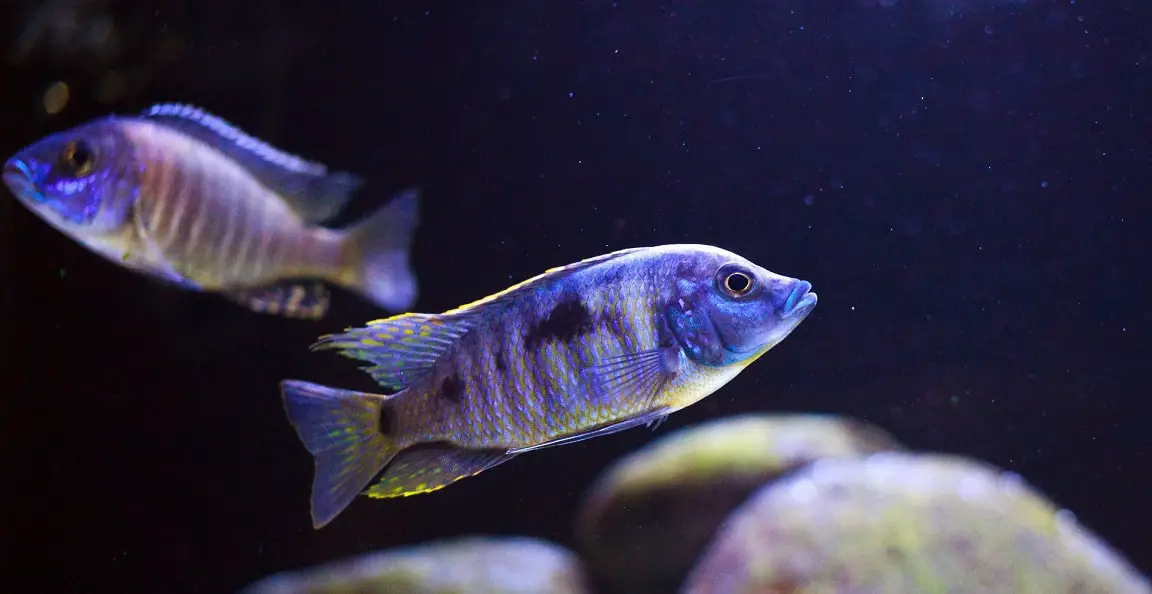
African cichlids are a popular choice for freshwater aquariums, and it’s not hard to see why. These brightly colored fish are native to the murky waters of Lake Malawi, making them well-suited to living in an aquarium with a crushed coral substrate. Crushed coral is a natural material that helps to replicate the African cichlid’s natural habitat.
In addition, the rough texture of the coral helps to discourage the growth of algae. African cichlids are also relatively large fish, so they need a substrate that can provide ample support. Crushed coral is both strong and lightweight, making it an ideal choice for African cichlid tanks.
Of course, there are also some drawbacks to using crushed coral as a substrate. The most significant disadvantage is that it is relatively expensive. In addition, crushed coral can be difficult to clean if it becomes dirty. However, many aquarists find that the benefits of using crushed coral outweigh the drawbacks.
Boesemani Rainbowfish
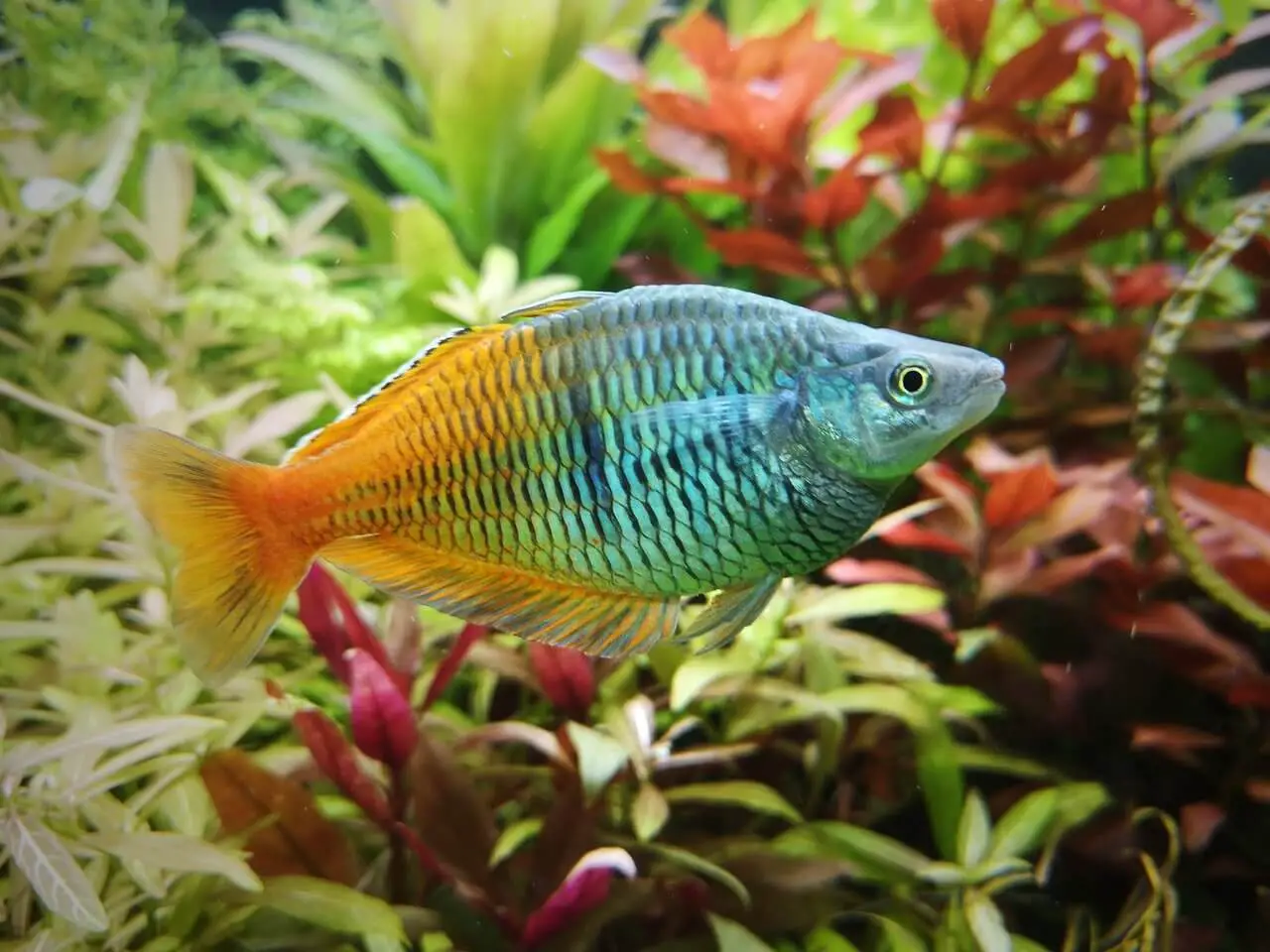
Boesemani Rainbowfish are native to the rivers and streams of New Guinea. They are a popular choice for aquariums because of their vibrant colors and relatively small size.
When choosing an aquarium substrate, crushed coral is often the best option for Boesemani Rainbowfish. This type of substrate closely resembles their natural habitat and provides them with plenty of hiding places.
Also, crushed coral helps to keep the water well-oxygenated, which is important for these fish. In addition, it provides a place for beneficial bacteria to grow, which helps to keep the water clean.
If you are looking for a substrate that will provide your Boesemani Rainbowfish with everything they need, don’t stress yourself! Crushed coral is a great choice.
Angelfish
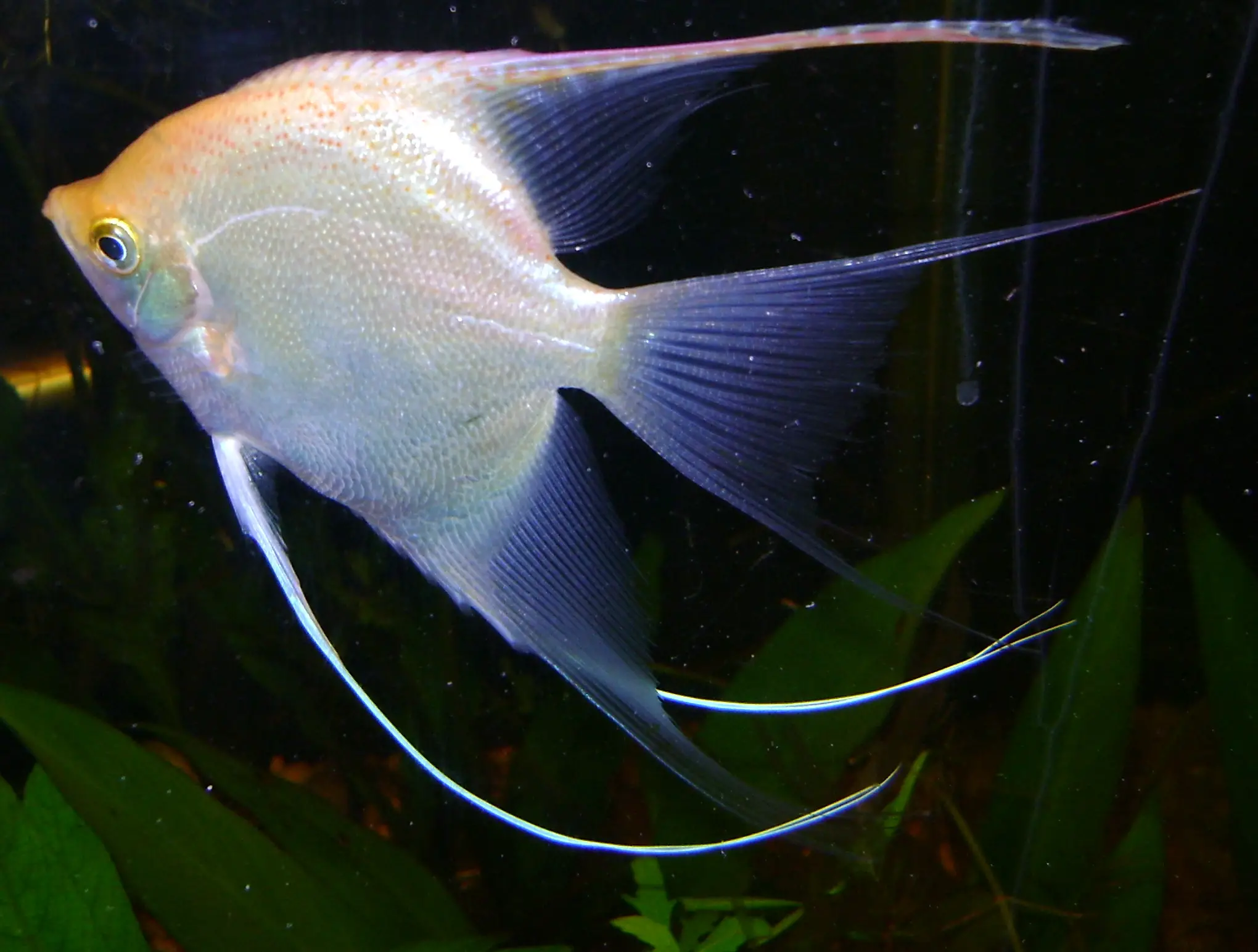
Angelfish are one of the most wonderful fish to keep as a pet. They are beautiful, unique creatures that add so much life and personality to your home aquarium. But if you’re new to the world of fish keeping, you may be wondering what kind of substrate is best for your angelfish tank.
Crushed corals are by far the best choice for angelfish tanks. There are a few reasons for this. First, angelfish come from South America, where the water is hard and alkaline. This means that they are used to a substrate that will raise the pH of their water. Crushed corals do just that.
Second, crushed corals help to buffer the water, which means it will be less likely to fluctuate. This is important because angelfish are very sensitive to changes in their environment and can easily get sick if the water parameters fluctuate too much.
Lastly, crushed corals are very beautiful and will give your tank a natural, South American look that angelfish will love.
Clownfish
Clownfish are a popular choice for aquariums because they are relatively easy to care for and are available in a wide variety of colors and patterns. Their natural habitat is in the coral reefs of the Indo-Pacific, so they are accustomed to living in a reef environment. When choosing a substrate for your clownfish, it is best to choose something that mimics their natural habitat as closely as possible.
Crushed coral is a good choice because it provides them with the necessary nutrients and minerals, and the rough surface will help to keep their gills clean. Another benefit of crushed coral is that it does not break down easily, so you won’t have to replace it as often as you would with other substrates.
However, one downside of crushed coral is that it can be sharp, so you’ll need to take care when handling it. Overall, clownfish are a great choice for beginning aquarists, and crushed coral is an ideal substrate for them.
Apart from sand and gravel, there are few fish that need a more soft substrate. These delicate need soil or a muddy base to settle and hide. So, let’s see what they are.
The Best Fish For Soil Substrate
There is no doubt substrate plays a vital role in the ecology of your aquarium. Among the various substrates that you will find, soil substrate is one of the most popular substrates. This is because it is relatively inexpensive and easy to find.
You can easily collect it from your backyard or purchase it at your local pet store. Soil substrate is also easy to maintain and does not require much attention. If you are the one that has to work a lot and do not have time to take care of your aquarium, then soil substrate is the best option for you.
However, some of the fish that is best for the soil substrate are:
Swordtails
Swordtails are a type of freshwater fish that are native to Central America. They get their name from their long, sword-like tailfin. Swordtails are a popular choice for aquariums because they are relatively easy to care for and can live in a wide range of environments.
Soil is the best substrate for Swordtail fish. This substrate is natural and easy to find, and it provides many benefits for your fish. It helps to create a natural habitat, and it also provides nutrients and helps to regulate moisture levels.
One downside of soil is that it can be difficult to clean if it gets dirty. However, this can be mitigated by using a layer of gravel on top of the soil. Overall, the soil is an excellent choice for a Swordtail aquarium and can help to keep your fish healthy and happy.
Endler’s Livebearer
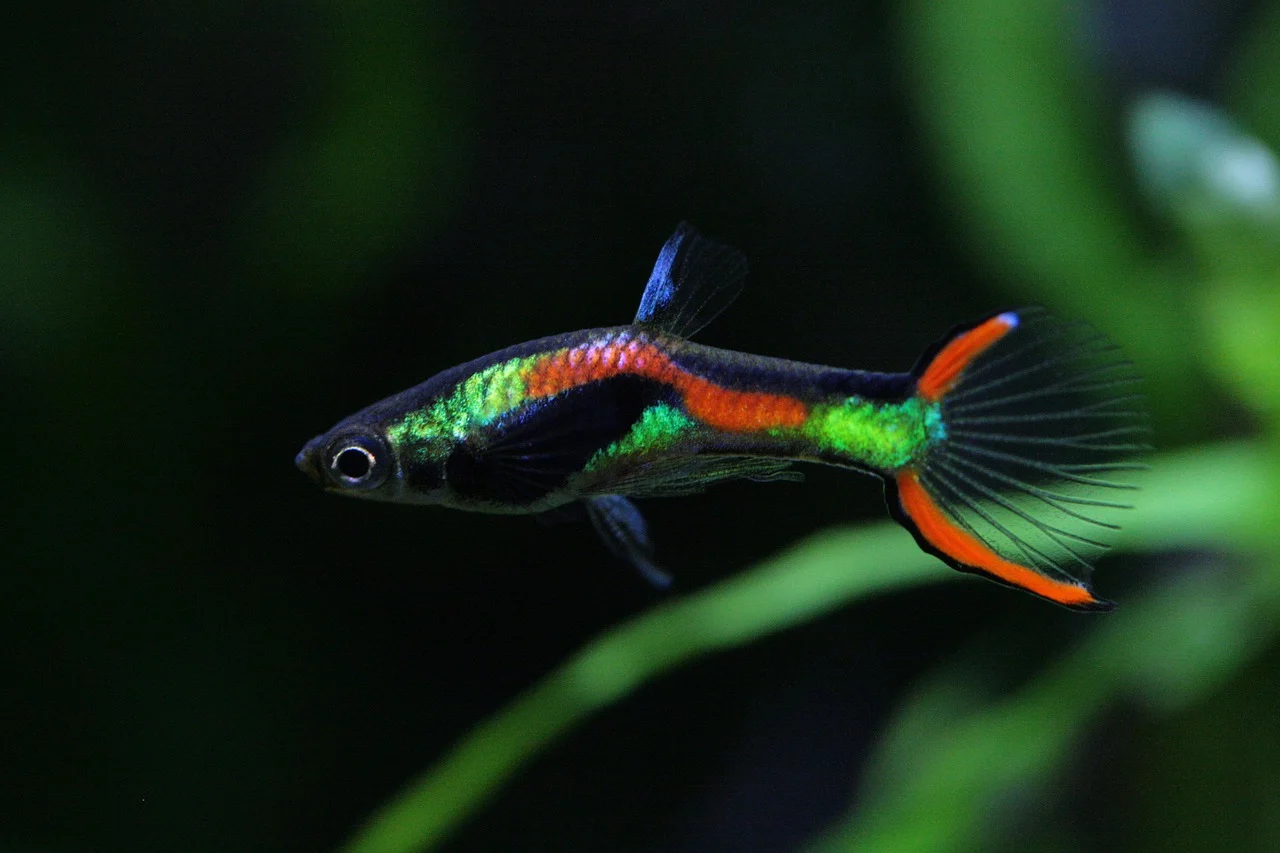
Endlers are small freshwater fish that originates from South America. They are a popular choice for aquariums because of their colorful patterns and their relatively small size. When choosing a substrate for an Endler tank, soil is often the best option.
Soil helps to recreate the natural habitat of the fish and also provides nutrients that can promote healthy growth. Another advantage of soil is that it is less likely to be displaced by the activities of the fish than other substrates such as gravel.
However, there are some potential drawbacks to using soil. If the tank is not adequately filtered, organic matter in the soil can break down and release harmful toxins into the water. Additionally, soil can be more difficult to clean than other substrates.
Overall, though, the soil is a good choice for an Endler tank because it replicates the natural environment of the fish and provides nutrients that promote healthy growth.
Danio
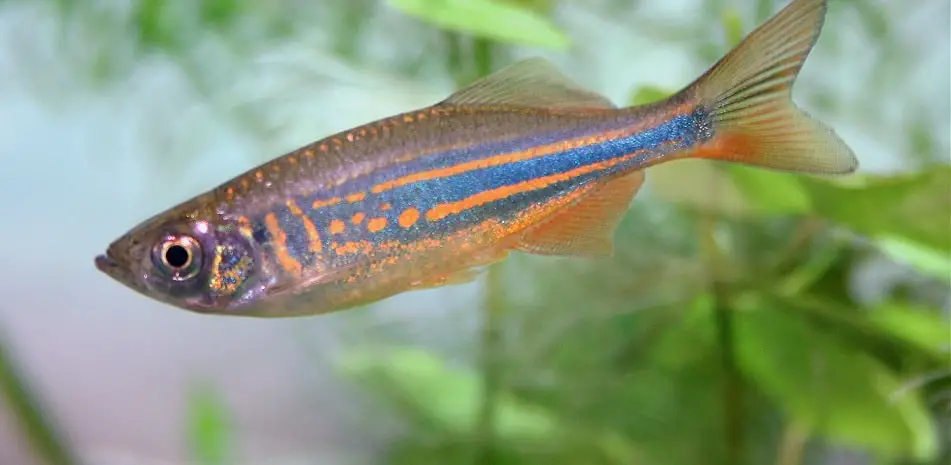
Usually, Danio is found in fast-flowing rivers and streams with a sandy bottom. They are active swimmers and do their best in an aquarium with plenty of space to swim. They come from tropical climates and prefer water with a temperature between 68 and 77 degrees.
While they can live in different types of substrates, the soil is usually the best substrate for danios. Soil allows them to feel more comfortable and secure since it replicates their natural habitat more closely. It also provides a place for them to bury themselves if they feel the need to hide.
In addition, the soil is less likely to damage its delicate fins than other substrates like gravel. If you have danios, using soil as your substrate is a good way to make sure they are happy and healthy.
Substrate sometimes doesn’t matter much for some fish. If you maintain their water parameters well, they will thrive. So, what are those fish then?
Fish That Do Not Need Substrates
While most fish prefer to live in a tank with a comfortable substrate. There are also some fish that dot need substrate at all and do just fine living in a “bare bottom” tank. These fish are perfect for beginner aquarists, as they are easier to care for and maintain. Some of the best fish for bare bottom tanks include:
Clown Loaches
Clown loaches are a type of freshwater fish that originates from Southeast Asia. They are a popular choice for aquariums because of their vibrant colors and playful nature. Clown loaches typically grow to be about 12 inches long, but they can reach lengths of up to 18 inches in the wild.
In their natural habitat, clown loaches live in slow-moving rivers and streams with a sandy bottom. They tend to bury themselves in the substrate, which is why many aquarists believe that they need a layer of sand or gravel in their tank.
However, clown loaches can actually live quite happily in a bare-bottom tank. This is because they don’t use the substrate for anything other than hiding and playing. As long as there are plenty of places for them to hide and explore, clown loaches will do just fine without any substrate.
Tetras
Tetras are a group of freshwater fish that are popular among aquarium enthusiasts. They are relatively small fish, and they come in a wide variety of colors and patterns. Tetras are native to South America, and in the wild, they typically live in slow-moving rivers and streams. Their natural habitat is typically lush and heavily planted, with a sandy or muddy bottom.
In the home aquarium, however, tetras can thrive in a bare-bottom tank. This is because they are not bottom-dwelling fish, and they do not use substrate to help them breathe or to support their eggs. Instead, they prefer to swim in the open water column, where they can feed on small insects and other aquatic invertebrates. While a bare-bottom tank may not be the most naturalistic setup for tetras, it is perfectly fine for them from a practical perspective.
Gourami
Dwarf Gourami is a type of fish that originates from Southeast Asia. They are typically found in slow-moving waters with plenty of vegetation. In their natural habitat, Dwarf Gourami grow to be about 2.5 inches long. However, in captivity, they usually only reach about half that size.
Dwarf Gourami is relatively easy to care for and makes a great addition to any freshwater tank. One of the unique things about Dwarf Gourami is that they can live without substrate. In their natural habitat, they don’t live on the bottom of the river or lake. Instead, they typically stay near the surface where there is more vegetation.
As a result, many hobbyists choose to keep them in a bare-bottom tank. This eliminates the need for gravel or sand and makes it easier to clean the tank. While the substrate isn’t necessary for Dwarf Gourami, some hobbyists still choose to add it to their tanks for aesthetic purposes.
Minnows
Minnows are a type of fish that are native to North America. They typically live in freshwater environments, such as ponds, lakes, and streams. Minnows are relatively small fish, with most species growing to be no more than 6 inches in length. Despite their small size, minnows are an important food source for larger fish, amphibians, and reptiles.
In the wild, minnows typically live in large schools near the bottom of their natural habitat. These fish do not require a substrate, as they prefer to swim in open water. As a result, many people choose to keep minnows in bare-bottom tanks.
However, it is important to provide hiding places for these fish, as they may become stressed if they feel exposed. For this, you can use rocks, driftwood, or plants. Minnows are relatively easy to care for and make a great choice for beginner fish keepers.
This is all about the fish and the best substrate bu them. But as you can see, there are few fish that can do best in more than just one substrate. In such a case, you can mix up the different substrates and use them.
I suggest you do some research and prepare what’s best for them!
How Many Substrates Should You Need For Your Fish Tank?
The amount of substrate best for your fish tank usually depends on the size of the tank and the type of fish you have. A good rule of thumb is one to two pounds per gallon.
For example, a ten-gallon tank would need approximately ten to twenty pounds of substrate. The type of fish you have will also play a role in how much substrate you need. Bottom-dwelling fish will require more than top-dwelling fish.
If you are still unsure about how much substrate you need, it is always best to ask a professional at your local pet store. They will be able to help you based on the size and type of fish you have.
What Is The Purpose Of Different Type Of Substrates?
Substrates are materials used to provide a base or foundation. There are different types of substrates with various purposes. From sand to gravel, each substrate serves a different purpose in the fish tank. Let’s take a look at the three main purposes of substrates:
Decoration
Who wouldn’t want a decoratively pleasing fish tank? Aesthetics are important, and the substrate is a big part of that. The type of substrate you choose depends on your personal taste.
Do you want a natural look? There are many types of sand and gravel that can give you that effect. Want something more colorful? You could go with glass beads or marbles. Substrates are crucial for decorating your fish tank, but that’s not their only purpose.
Fish Habitat
Your fish need a place to hide and feel safe. That’s where the substrate comes in. Gravel and sand are good choices for this because they provide plenty of places for your fish to explore and burrow. Rocks can also be used, but be careful not to use ones that are too sharp or abrasive.
Adding different substrates creates a more natural-looking habitat for fish, which can make them feel more comfortable and reduce stress levels.
Bacteria Medium
Certain types of bacteria need a substrate to live on. This is especially important in a fish tank because these bacteria help to break down waste products. Without them, your tank would quickly become polluted. Gravel and sand are both good choices for this purpose.
The substrate is also home to beneficial bacteria that help to keep the water clean. These bacteria break down fish waste and other organic matter, helping to keep the water quality high. A good substrate will provide a place for these bacteria to thrive and do their job.
Now that you know the purpose of substrates, you can choose the right one for your fish tank and prepare it for your fish. Now, let’s move further to the preparation of the fish tank.
How To Prepare Substrates For Your Fish Tank?
Before you start, you need to know what kind of fish you are going to keep in your aquarium as different fish have different requirements.
For example, bottom-dwelling fish prefer a soft substrate so that they can easily bury themselves, while fish that swim in the middle or top of the water column prefer a coarser substrate.
Here is a quick stepwise guide on how to prepare different types of substrates for your fish tank:
Step One: Collect The Required Materials
The first thing you need to do is collect all the required materials. For a soft substrate, you will need clay and sand while for a coarser substrate, you will need gravel and rocks.
You can either buy these materials from a pet store or collect them yourself from a nearby riverbed or beach.
Step Two: Wash The Materials Thoroughly
Once you have collected all the required materials, the next step is to wash them thoroughly. This is important as it will remove any dirt or debris that might be present on the surface of the substrate.
To wash the substrate, simply place it in a bucket of water and stir it around until the water becomes cloudy. Once the water is cloudy, drain it out and repeat the process until the water runs clear.
Step Three: Boil The Materials (Optional)
If you want to sterilize the substrate, then you need to boil it before adding it to the fish tank. To do this, simply place the substrate in a pot of boiling water and let it cook for about 15 minutes.
Once the substrate has been boiled, drain it out and let it cool down before adding it to the fish tank.
Step Four: Add The Substrates To The Fish Tank
The final step is to add the substrate to the fish tank. If you are using a soft substrate, then you need to add a layer that is at least two inches deep.
For a coarser substrate, you need to add a layer that is at least four inches deep. Once you have added the desired amount of substrate to the fish tank, you can then start adding your fish.
However, after preparing a substrate for your fish, you will also need to know how to clean the substrate.
How To Clean The Substrate?
It is important to clean the substrate on a regular basis, at least once a week. This will help to keep the fish healthy and prevent the spread of disease. There are a few different ways to clean the substrate:
Vacuuming
Vacuuming is the most common way to clean the substrate. You can use a handheld vacuum or an aquarium vacuum. Be sure to vacuum all areas of the tank, including the corners and beneath decorations.
Siphoning
Siphoning is another popular method for cleaning the substrate. You will need a siphon tube and a bucket. Place the siphon tube in the tank and suck on the other end to start the siphon. Hold the tube above the bucket and let the water flow into it. Move the siphon around to different areas of the tank to remove all of the debris.
Replacing The Substrate
If your substrate is extremely dirty, you may need to replace it entirely. This should be done every few months or as needed. To replace the substrate, simply remove all of the old substrates from the tank and rinse it off. Then, add a new substrate to the tank. Be sure to wash your hands thoroughly after handling the old substrate.
Manual Cleaning
Manual cleaning is a bit more time-consuming, but it is effective. To manually clean the substrate, remove all of the fish from the tank and then remove all of the decorations. Scoop out as much of the debris as possible with your hands or a small scoop. Then, rinse off all of the decorations and put them back in the tank. Finally, add a new substrate to the tank.
Cleaning the substrate is an important part of fish care. Be sure to do it on a regular basis to keep your fish healthy and happy!
Some Tips For Maintenance Of Substrates In Fish Tank
When you have just begun to set up an aquarium, the task of keeping the substrate clean may seem like a daunting one. There are a few things you can do to make sure your substrate stays in good condition.
So, to help you, I have a few tips on how to maintain your substrate, such as:
- You must regularly check the condition of your substrate. This means looking for any signs of decay or other problems.
- You should also vacuum the substrate on a regular basis. This will help to remove any debris that has accumulated on the surface.
- Another important tip is to avoid overfeeding your fish. Excess food can lead to the growth of harmful bacteria in the substrate.
- You should also replace the substrate on a regular basis. This will help to keep the quality of the water in your aquarium high.
- Also, remember to always keep an eye on your filter. A dirty filter can cause all sorts of problems for your aquarium, including the growth of harmful bacteria in the substrate.
- Finally, you should change the water in your aquarium on a regular basis. This will help to keep the substrate clean and free of harmful toxins.
How Much Does Each Substrate Cost?
The cost of the substrate is one important factor to consider when starting an aquarium. Here is a list of common substrates used in tanks and their prices. Prices are per pound.
- Gravel: $0.50 – $15.00
- Sand: $0.70 – $30.00
- Substrate: $12.00
- Peat moss: $0-$15 per bale
- Coconut fiber:$12-$30 per brick
As you can see, there is a big range in prices for substrates. It really depends on what look you are going for and how much money you want to spend. For example, if you have a tight budget, gravel would be the best choice. You can even go for a soil substrate that is easily found in garden stores.
It is more effective if you do research and finds the substrate that is best for you and your budget first.
Things To Consider When You Keep Substrates In Fish Tank
As you can see, preparing and maintaining a substrate is not as hard as some might suspect it. All you need to do is consider a few things while you keep the substrate in your tank. Such as:
Plants You Want To Grow
The first thing you need to consider is the types of plants you want to grow. Different plants have different substrate requirements. For example, if you want to grow a carpeting plant, then you will need a finer-grained substrate so that the roots can easily spread out. On the other hand, if you want to grow large Amazon Sword plants, then you will need a coarser-grained substrate so that the roots can anchor themselves properly.
Fish You Want To Keep
Similarly, the fish you want to keep also plays a major role. Different fish have different grazing habits. Some fish like to nibble on plants, while others uproot them. If you have plant-eating fish, then you will need to have a substrate that is not easily uprooted. But, if you have fish that are heavy diggers, then you will need a substrate that is not too fine-grained, or it will get clouded up quickly.
Type Of Tank
The type of tank also needs to be considered when you are preparing the substrate. For example, if you have a freshwater tank, then you will need to use a different substrate than if you had a saltwater tank. This is because salt water is much more corrosive and can break down substrates over time.
Size Of Tank
The size of your tank is also an important factor to consider. If you have a small tank, then you will need to use a substrate that is not too coarse-grained or it will make the water look cloudy. However, if you have a large tank, then you can get away with using a coarser-grained substrate because the water will not look as cloudy.
Type Of Filter
The type of filter you use can also affect the substrate you use. For example, if you have a canister filter, then you will need to use a substrate that is not too fine-grained or it will get caught in the filter and clog it up. Nevertheless, if you have an under gravel filter, then you will need to use a substrate that is not too coarse-grained, or it will not be able to properly aerate the water.
Type Of Lighting
The type of lighting you use can also affect the substrate you use. For example, if you have high-intensity lighting, then you will need to use a substrate that is not too light in color because it will reflect the light and make the tank look very bright. On the other hand, if you have low-intensity lighting, then you will need to use a substrate that is not too dark in color because it will absorb the light and make the tank look very dark.
I hope this helped you understand the different factors that need to be considered when preparing a substrate for your tank. What do you consider before you buy a substrate for your fish?
Some Best Substrates For Fish Tank In 2022
As fish-keeping hobbyists, we are always on the lookout for new and better substrates for our beloved fish. And with the new year just around the corner, here are some of the best substrates of 2022!
Fluval Plant and Shrimp Stratum
This is a new product from Fluval that is perfect for plant enthusiasts and shrimp keepers. It is made of natural clay and contains nutrients that are beneficial for both plants and shrimp.
Activ-Flora Lake Gems for Aquarium, 20-Pound
These are perfect for freshwater aquariums and provide a natural source of nutrients for plants. They are also great for fish that like to dig, as they will not damage the roots of plants.
Seachem Flourite 15.4 lbs
This is a classic substrate that has been around for years and is still one of the best. It is made of porous clay that is perfect for plant growth and also contains nutrients that are beneficial for plants.
CaribSea Eco-Complete Planted Aquarium Substrate 20-lb Bag
This is another great substrate for planted aquariums. It contains all the nutrients that plants need to thrive and also has a nice black color that makes plants look really vibrant.
CARIBISEA Eco-Complete Black Planted Aquarium Substrate
This is the perfect substrate for those who want a black aquarium. It contains all the nutrients that plants need and also has a really nice texture that makes plants look really good.
So, there you have it, some of the best substrates of 2022! I hope you find the perfect substrate for your aquarium.
Some FAQs
How To Pick The Best Substrates For A Planted Fish Tank?
There are many factors to consider when choosing a substrate for your freshwater aquarium. The type of plants you want to grow, the size of your fish, and the overall look you are going for all play a role in determining the best substrate for your tank.
What Are The Best Fish Tank Substrates?
There is no one-size-fits-all answer to this question, as the best substrate for your fish tank will ultimately depend on your specific needs and preferences. However, some of the most popular options include gravel, sand, and rocks.
Does The Substrate Need Maintenance?
No, the substrate does not need to be regularly maintained. However, it is important to note that some substrates may require more frequent cleaning than others. For example, gravel and sand can become compacted over time and may need to be stirred or replaced periodically.
What Is The Best Substrate For Small Fish?
Small fish require a substrate that is soft and smooth, as their delicate fins can be easily damaged by rough or sharp materials. gravel and sand are both good options for small fish tanks.
Do Substrates Affect The Health Of Your Fish?
The type of substrate you use in your fish tank can have an impact on the health of your fish. For example, gravel and sand can both cause problems if swallowed by small fish. As a result, it is important to choose a substrate that is safe for your particular species of fish. Ultimately, the best way to ensure the health of your fish is to consult with a qualified aquarium professional.
Conclusion
In conclusion, every substrate has its own advantages and disadvantages that should be considered before making a purchase. It is important to do your research in order to find the best substrate for your needs. With so many options on the market, it can be overwhelming to choose the right one.
The best substrate for a planted freshwater tank is one that is easy to maintain and does not affect the health of your fish. There are many different substrates available on the market, so it is important to do your research before making a purchase.
If you have any questions, feel free to ask a sales associate at your local pet store or contact an aquarium professional. They will be able to help you choose the best substrate for your needs.
Happy Fishkeeping!




